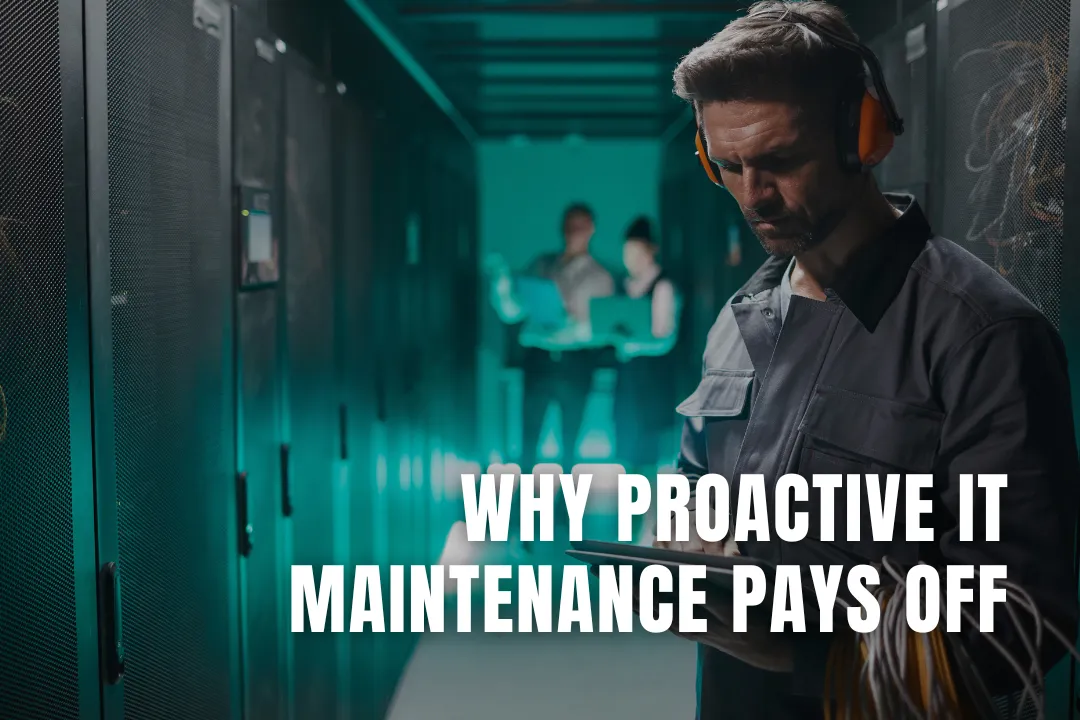
No business owner likes handling IT problems. Systems fail, employees are unproductive, and customers grow frustrated. These disruptions not only waste time but also incur financial losses. Did you know that downtime costs businesses an average of $5,600 per minute? The expenses add up quickly. However, many IT issues can be prevented with consistent maintenance and planning. This article will explain how addressing potential problems early saves money, enhances productivity, and avoids unnecessary stress. Continue reading to safeguard your business from avoidable disorder!
IT downtime drains money and morale faster than you think. It interrupts daily operations, leaving businesses struggling to regain stability.
Employees often idle away time during system outages. Tasks come to a standstill, causing unnecessary delays. Projects fail to meet deadlines, and teams rush to recover. Downtime interrupts communication tools such as email or project management systems. Without access to essential software, teamwork deteriorates rapidly. Teams lose concentration as frustration increases. Lost work hours accumulate, costing businesses both time and money. The cascading effect can take days to resolve once systems are restored. Lost sales opportunities exacerbate this problem further.
Unplanned IT downtime often halts sales activity abruptly. Point-of-sale systems might stop working without notice, or e-commerce platforms could fail during high traffic periods. Customers are unlikely to wait when systems are down; they will turn to competitors instead. Sales teams lose critical time pursuing leads if communication tools stop working. A server outage can disconnect them from emails or CRM platforms right when deals are ongoing. Every moment matters in business, and these missed opportunities directly impact revenue goals.
Sudden IT failures can lead to substantial emergency repair bills. Hardware replacements, urgent technician visits, or after-hours support fees accumulate quickly. These unexpected costs strain budgets and interfere with financial planning.
“Failing to plan for maintenance is planning to pay for expensive repairs.”
Neglecting basic technology maintenance often shifts expenses from manageable upkeep to urgent fixes. Businesses end up spending considerably more over time compared to consistent issue prevention strategies.
A well-maintained IT system keeps your business running smoothly. Addressing issues early saves you from expensive surprises later.
Identifying problems early keeps systems operating efficiently. For instance, outdated software can cause security weaknesses. Hackers may take advantage of these gaps to access sensitive business data. Regular system monitoring identifies such risks before they turn into significant breaches.
Minor hardware issues often worsen if left unaddressed. A failing hard drive might appear insignificant, but it could result in complete system failures later. Routine checks and preventive maintenance address these issues early, preventing expensive downtime or urgent repairs.
Catching issues early reduces the risk of costly downtime. Preventive maintenance often costs less than emergency repairs or system overhauls. Consider replacing a worn part before it fails; it’s more affordable and avoids larger disruptions.
Regular monitoring reduces long-term expenses by increasing the lifespan of your IT systems. Thoughtful resource planning prevents overspending on unnecessary upgrades or fixes. Businesses often reduce these long-term costs by partnering with providers offering IT managed services in Asheville, which deliver continuous system care and expert support tailored to evolving needs. A well-maintained system requires fewer sudden interventions, conserving both money and time in the process.
Reliable systems keep your business running efficiently. Regular maintenance identifies issues early, preventing them from escalating into major problems, reducing downtime and unexpected interruptions. This stability allows teams to focus on essential tasks instead of rushing to resolve unforeseen issues.
Reduced outages lead to increased productivity and enhanced customer experiences. A steady system prevents delays, missed opportunities, or dissatisfied clients waiting for service to resume. Committing to maintenance ensures operations remain reliable and consistent every day.
Stay ahead of IT issues with practical steps that keep your systems running smoothly and reduce unwanted surprises.
Regular monitoring and updates are essential for keeping your IT systems in good condition. Small steps taken consistently can prevent significant issues in the future.
Regular maintenance through routine checks minimizes unexpected issues while ensuring more effective IT management for your business operations!
Regular system monitoring is only half the battle. A disaster recovery plan ensures your business stays resilient when unexpected issues arise.
Effective planning reduces uncertainty while maintaining productivity.
Disaster recovery plans mean little without prepared staff. Training your team prepares them to handle unexpected IT issues confidently and quickly.
Fixing problems before they spiral saves time, money, and headaches. Regular maintenance keeps systems running smoothly and reduces unexpected downtime. It protects your business from costly repairs and lost opportunities. Staying ahead of issues builds trust with clients and increases productivity. Simply put, prevention beats reaction every time!